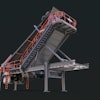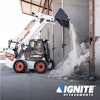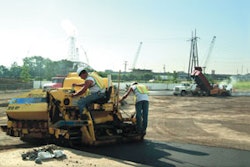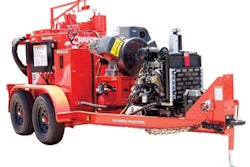
When the weather turns chilly, transporting warm asphalt to a cold jobsite can be a challenge. The longer the hauling distance and the colder the air temperature, the greater the risk an asphalt load will arrive too cold to be applied.
That's an expensive problem, in more ways than one. Not only do contractors risk the loss of a load and the subsequent clean-up problem, they also face fines and other penalties. For example, many states have mandated that the sides of trailers used to haul asphalt be insulated.
So, contractors and manufacturers solved the problem by adding insulation to the sides of existing dump bodies and trailers. This was often accomplished by putting insulation such as foam board between the side posts, then covering it with a thin metal skin. The aluminum or stainless-steel skin was then pop riveted to the posts. It wasn't pretty, but it was an insulation adaptation that worked.
Some contractors complain that the thin metal skin is difficult to maintain. Dents and even rips abound. But the biggest complaint is the fact that adding insulation can add over 200 pounds to the weight of a dump trailer.
But now there's a new insulated trailer design that adds as little as 24 pounds to an asphalt hauling dump trailer. Manufacturers are replacing the traditional sheet and post side walls with smooth-sided hollow core walls. This double-wall design provides a perfect pocket to put less expensive, higher R-value insulation. And the new design side-walls don't sacrifice strength. Smooth-sided dumps are actually stronger than traditional sheet and post side walls, plus they are much more aerodynamic, which cuts down on fuel costs.
Smooth-sided trailers are aesthetically good looking, easier to clean, and much more adaptable to company names, logos and attention-grabbing graphics. Plus, double-wall panels protect the outer wall from dents, which improves resale value.
Are the smooth-sided dumps more economical than the traditional sheet and post sidewall style? Even accounting for the additional cost of adding insulation and a thin skin to a traditional sheet and post body style, the new smooth-sided styles are likely to cost more up front. Manufacturers make the point that added savings from operations and upkeep reduces the cost-per-mile lifecycle of the smooth-sided body styles. Some manufacturers offer additional benefits, such as the option to increase the thickness of metal material in the higher wear areas, like the inside last four feet of a dump trailer.
The smooth-sided body style is definitely gaining interest and acceptance. And for asphalt haulers, the added insulation value is one they can take to the bank.



















